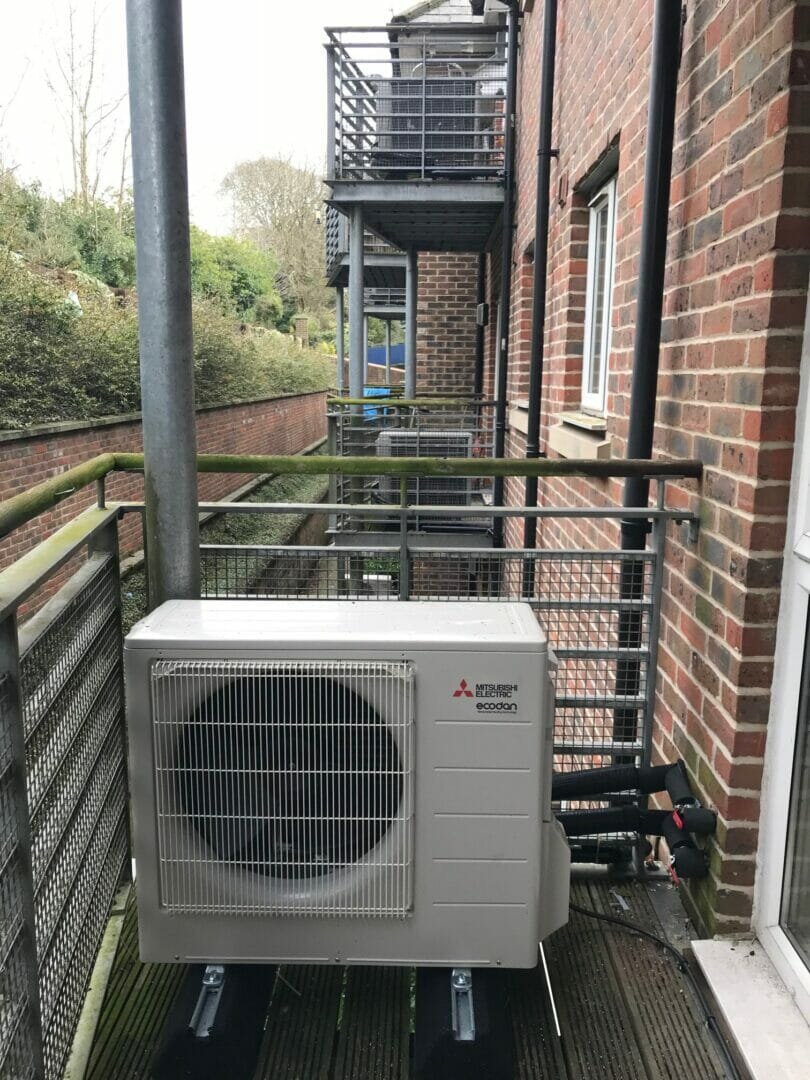
Max Halliwell, Product Manager, Mitsubishi Electric Europe
It’s official, 2018 is the year that marks the transition from gas to heat pump. Renewable energy is increasingly becoming a trusted source of heat in domestic environments, with homes installing solar panels in much greater volumes than seen before. But when it comes to traditional sources of heat, most houses are still fitted with gas boilers, with many homeowners unaware of the alternative options available. Thankfully, this trend is changing as the emergence of heat pump technology brings a new wave of domestic heating.
The Numbers Speak Volumes
In 2017, global sales of heat pumps jumped by 30%, to nearly $12 billion. It goes without saying that Europe is a particularly rich heat pump market, because historically almost all home heating has been fuelled by natural gas. For many governments across Europe, the key policy driver leading to the rise of heat pumps is climate change, as governments look to reduce their reliance on traditional fossil fuels. According to the “European Heat Pump Market and Statistics Report 2017”, the market grew for a third year in a row, rising by 12% or nearly 1 million units.
Let’s break these numbers down a little further – the UK government, for example, has forecasted the sale of one million heat pumps a year by 2030, with 2017 seeing the installation of roughly 22,000 new heat pumps, an increase in 18% on the previous year. As the number of new homes being built increases, the low carbon and increased efficiency demands on traditional sources of heat are going to be ever greater, increasing opportunities for low carbon heat pumps further.
The UK is far from an isolated case. It’s much the same across most of Europe. Take Germany for example, where heat pumps were installed in 43% of residential buildings in 2017, moving ahead of gas heaters for the first time ever (which represented 42% of installations). In Finland, with its abundance of geothermal heat, the heat pump market size is forecast to exceed 3GW by 2024. This looks very achievable when you consider the fact that over 8,000 people switched from electricity or oil driven heating systems to Geothermal Heat Pump systems in 2015 alone. Under its government’s “Energy Agenda”, The Netherlands, a long-time gas producer is turning towards heat pumps as it plans to reduce CO2 emissions from the built environment by 80% by 2050. And in Denmark, estimates suggest heat pump sales will reach 600,000 by 2050 – the year when the nation plans to be completely free of fossil fuels.
Heat Pump Sales are on the Up
Make no mistake heat pumps have long been embraced for their ability to offer a reduction in running costs, increased efficiencies and a pathway to a cleaner, greener future. They are perfect solutions for residential home owners looking to reduce energy consumption and save money on bills. They are also increasingly becoming first choice for housing associations thanks to their cost-effective use of renewable energy, helping to keep the costs down for both landlords and tenants. Designed for retro-fitting, suitable for almost any property, heat pumps are even able to work alongside existing heating systems in a hybrid situation if required, completely removing the need for expensive retrofitting.
However, to really explain why 2018 is the inflection point where heat pumps truly start to take over, we need to look deeper than this.
Why now?
With oil prices at the highest level for the last three years, and the RHI programme lifetime extended to 2021, the arguments for adopting heat pumps are growing stronger. There are some great innovations coming in, not just from the UK but also from global companies that will help to raise standards and contribute to a more dynamic heating market in the UK.
There is, of course, the low-carbon economy roadmap, put in place by the EU. Regardless of whatever Brexit we end up with, the UK Government has already agreed to incorporate EU Law into UK Law, so this will still impact UK businesses. The roadmap declares that by 2050, all members of the EU should cut greenhouse gas emissions to 80%, below the levels produced in 1990.
It also lists a number of milestones required in order to achieve this – 40% emissions cuts by 2030 and 60% by 2040. Targets in legislation like this are helping to shift the continent’s reliance away from its ageing gas supply chain, whilst also creating a sustainable future for off-grid homes – where heat pumps can once again offer a happy alternative to bulky fuel delivery and storage.
With the next iteration of the ECO scheme, due to run from 2018-2022, there is hope that the heat pump market will receive greater attention than traditional fossil-fuel based heating. With the Home Heating Cost Reduction Obligation (HHCRO) suppliers must promote measures to improve the ability of households to heat their homes. With around 3.6 million homes in England and Wales off the mains gas grid, there is more than enough of a target market for installers.
The Future for Heat Pumps
It’s safe to say that the future for the heat pump looks bright. But there is still a lot to be done to ensure they penetrate the market as expected. Price has always been a major factor determining their uptake – yes, they do bring significant cost savings over time, but they aren’t cheap and do require initial up-front expenditure. Heat pumps are on the frontline as renewable energy becomes increasingly commonplace across UK homes. The UK government has pledged to get 15% of its energy from renewable sources by 2020, and with heat pumps a guaranteed way to reduce dependency on traditional sources of energy, it is likely to government will continue to push the virtues of the technology.
Most heat pumps are very quiet in operation and the quieter the heat pump, the more flexibility there is in where it can be positioned to ensure no disturbance to homeowner or neighbour. These ultra-quiet heat pumps are set to become very common across installations where space is at a premium.
Ongoing technological development is also crucial to further advance the pace at which home owners can be given the ultimate flexibility they need to install the device. As is education, to ensure the energy and efficiency advances become increasingly recognised by not only builders, planners and contractors but also by homeowners and self-build developers. The support from the government should not be underestimated and is essential for the heat pump market to continue to thrive.
All of this presents an exciting challenge and opportunity to those in the industry. It means that it is officially time for everybody to come together, take this momentum, build on it and stand united to create an increasingly low carbon future.



